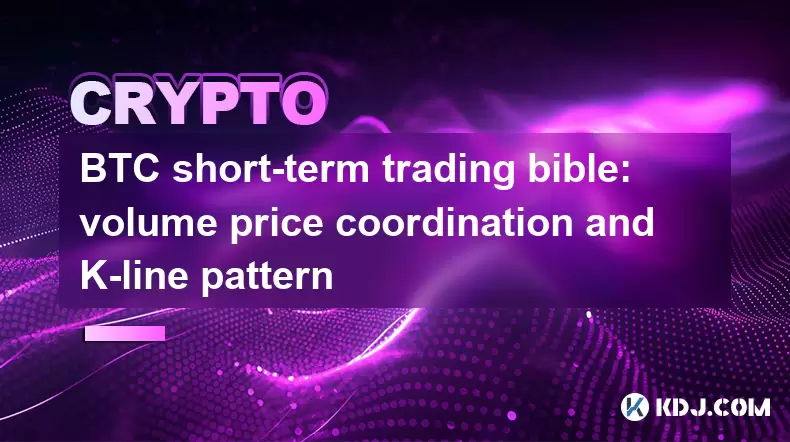-
 Bitcoin
Bitcoin $116700
0.24% -
 Ethereum
Ethereum $3973
4.34% -
 XRP
XRP $3.283
7.68% -
 Tether USDt
Tether USDt $1.000
0.01% -
 BNB
BNB $789.8
2.27% -
 Solana
Solana $176.2
3.31% -
 USDC
USDC $0.9999
0.00% -
 Dogecoin
Dogecoin $0.2238
5.14% -
 TRON
TRON $0.3389
-0.51% -
 Cardano
Cardano $0.7907
4.03% -
 Stellar
Stellar $0.4527
10.02% -
 Hyperliquid
Hyperliquid $41.07
4.27% -
 Sui
Sui $3.794
1.77% -
 Chainlink
Chainlink $19.49
10.40% -
 Bitcoin Cash
Bitcoin Cash $580.9
0.74% -
 Hedera
Hedera $0.2617
4.32% -
 Avalanche
Avalanche $23.41
3.67% -
 Ethena USDe
Ethena USDe $1.001
-0.03% -
 Litecoin
Litecoin $122.4
1.38% -
 Toncoin
Toncoin $3.364
1.49% -
 UNUS SED LEO
UNUS SED LEO $8.988
0.37% -
 Shiba Inu
Shiba Inu $0.00001295
2.82% -
 Uniswap
Uniswap $10.62
5.75% -
 Polkadot
Polkadot $3.922
4.46% -
 Dai
Dai $1.000
0.01% -
 Bitget Token
Bitget Token $4.494
2.15% -
 Monero
Monero $268.0
-1.30% -
 Cronos
Cronos $0.1523
3.68% -
 Pepe
Pepe $0.00001127
4.43% -
 Aave
Aave $285.4
4.85%
BTC short-term trading bible: volume price coordination and K-line pattern
BTC short-term trading uses volume price coordination and K-line patterns to capitalize on Bitcoin's rapid price movements and maximize profits.
Jun 01, 2025 at 07:28 pm

Introduction to BTC Short-term Trading
BTC short-term trading is a strategy employed by traders looking to capitalize on the rapid price movements of Bitcoin. This approach requires a deep understanding of market dynamics, particularly volume price coordination and K-line pattern analysis. These two elements are crucial for making informed trading decisions and maximizing profits in the volatile cryptocurrency market.
Understanding Volume Price Coordination
Volume price coordination refers to the relationship between trading volume and price movements. In the context of Bitcoin trading, this concept helps traders gauge the strength of a price trend. High trading volumes accompanying a price increase suggest strong buying pressure, indicating a bullish trend. Conversely, high volumes during a price decrease signal strong selling pressure, pointing to a bearish trend.
To effectively use volume price coordination in BTC short-term trading, traders must monitor the volume closely. A sudden spike in volume can precede significant price movements. For instance, if Bitcoin's price is rising and the volume is increasing, it may be a good time to enter a long position. On the other hand, if the price is falling with high volume, it might be an opportune moment to short the asset.
Analyzing K-line Patterns
K-line patterns, also known as candlestick patterns, are another essential tool for BTC short-term traders. These patterns provide visual representations of price movements over specific time frames, helping traders identify potential entry and exit points. Common K-line patterns include doji, hammer, shooting star, and engulfing patterns, each signaling different market sentiments.
Understanding these patterns involves recognizing their shapes and what they indicate about market psychology. For example, a doji pattern suggests market indecision, often appearing at the top or bottom of a trend. A hammer pattern indicates a potential bullish reversal, while a shooting star suggests a bearish reversal. An engulfing pattern can signal a strong shift in momentum, either bullish or bearish, depending on the direction of the engulfing candle.
Combining Volume and K-line Patterns
The most effective BTC short-term trading strategies involve combining volume price coordination with K-line pattern analysis. By observing both elements, traders can make more accurate predictions about future price movements. For instance, if a bullish engulfing pattern appears on the chart and is accompanied by a significant increase in volume, it strengthens the case for a bullish trend continuation.
Similarly, if a bearish shooting star pattern emerges with high trading volume, it may indicate a strong bearish reversal. Traders should look for these confluences to increase their confidence in their trading decisions. By integrating these two tools, traders can better navigate the volatile BTC market and improve their chances of success.
Practical Application in BTC Trading
To apply these concepts in BTC short-term trading, traders should follow a systematic approach. Here are some steps to consider:
- Monitor the Market: Use reliable trading platforms to keep an eye on Bitcoin's price and volume. Platforms like Binance, Coinbase, and TradingView offer real-time data that can be crucial for making timely decisions.
- Identify K-line Patterns: Regularly scan the charts for recognizable K-line patterns. Use tools like trend lines and support/resistance levels to enhance your pattern recognition.
- Analyze Volume: Pay close attention to volume spikes and dips. Use volume indicators such as the Volume Weighted Average Price (VWAP) to understand the strength of price movements.
- Combine Insights: When you spot a significant K-line pattern, check the accompanying volume. If the volume supports the pattern's implications, consider entering a trade.
- Set Entry and Exit Points: Based on your analysis, determine your entry and exit points. Use stop-loss and take-profit orders to manage risk effectively.
Case Studies of Successful Trades
To illustrate the effectiveness of combining volume price coordination and K-line pattern analysis, let's look at a couple of case studies from actual BTC trades.
- Case Study 1: A trader noticed a bullish engulfing pattern on the BTC/USD chart, accompanied by a significant increase in volume. Confident in the pattern's strength, the trader entered a long position. The price continued to rise, and the trader exited the trade with a 5% profit.
- Case Study 2: Another trader identified a bearish shooting star pattern with high volume on the BTC/EUR chart. Believing in the bearish reversal, the trader shorted Bitcoin. The price dropped as anticipated, and the trader closed the position with a 3% profit.
These examples demonstrate how combining volume and K-line patterns can lead to successful trades in the BTC market.
Frequently Asked Questions
Q: How often should I check the volume and K-line patterns for BTC short-term trading?
A: For BTC short-term trading, it's advisable to check the volume and K-line patterns at least every few hours, especially during periods of high volatility. The more frequently you monitor these indicators, the better you can react to market changes.
Q: Can volume price coordination and K-line patterns be used for other cryptocurrencies?
A: Yes, the principles of volume price coordination and K-line pattern analysis can be applied to other cryptocurrencies as well. However, the effectiveness may vary depending on the liquidity and volatility of the specific cryptocurrency.
Q: Are there any tools that can help automate the analysis of volume and K-line patterns?
A: Yes, several trading platforms and software offer tools that can automate the analysis of volume and K-line patterns. Tools like TradingView and MetaTrader 4 provide customizable indicators and scripts that can help streamline your analysis.
Q: How can I improve my skills in recognizing K-line patterns?
A: Improving your skills in recognizing K-line patterns involves practice and study. Use demo accounts on trading platforms to practice identifying patterns without risking real money. Additionally, reading books and taking courses on technical analysis can enhance your understanding and recognition abilities.
Disclaimer:info@kdj.com
The information provided is not trading advice. kdj.com does not assume any responsibility for any investments made based on the information provided in this article. Cryptocurrencies are highly volatile and it is highly recommended that you invest with caution after thorough research!
If you believe that the content used on this website infringes your copyright, please contact us immediately (info@kdj.com) and we will delete it promptly.
- Navigating the Crypto Market in 2025: Smart Decisions for the Meme Supercycle
- 2025-08-09 08:50:12
- DeFi, Tokenized Stocks, and NFTs: A Wild Ride in the Crypto Cosmos
- 2025-08-09 08:30:11
- AERO Price Skyrockets: Aerodrome Finance Sees Massive Surge Amid Coinbase Buzz
- 2025-08-09 08:55:19
- Coinbase, Cosmos, and dYdX: Navigating the Crypto Currents
- 2025-08-09 06:30:16
- BNB Price, Altcoins, and Predictions: What's the Buzz?
- 2025-08-09 06:30:16
- Crypto Presale Projects Primed for Gains in 2025: A New Yorker's Take
- 2025-08-09 06:50:15
Related knowledge

Can the Bitcoin protocol be changed?
Aug 07,2025 at 01:16pm
Understanding the Bitcoin ProtocolThe Bitcoin protocol is the foundational set of rules that govern how the Bitcoin network operates. It defines every...

What happens to Bitcoin transactions once they are confirmed?
Aug 09,2025 at 05:22am
Understanding Bitcoin Transaction ConfirmationWhen a Bitcoin transaction is initiated, it is broadcast to the network and placed in a pool of unconfir...

How are Bitcoin transactions verified?
Aug 08,2025 at 06:57am
Understanding Bitcoin Transaction VerificationBitcoin transactions are verified through a decentralized network of nodes and miners that ensure the le...

How does decentralization make Bitcoin secure?
Aug 08,2025 at 09:35am
Understanding Decentralization in BitcoinDecentralization is a foundational principle of Bitcoin's architecture and plays a critical role in its secur...

What are some common misconceptions about Bitcoin?
Aug 07,2025 at 07:22pm
Bitcoin is Just Like Regular MoneyA widespread misconception is that Bitcoin functions identically to traditional fiat currencies like the US dollar o...

What is the role of nodes in the Bitcoin network?
Aug 08,2025 at 04:14pm
Understanding the Function of Nodes in the Bitcoin NetworkNodes are fundamental components of the Bitcoin network, serving as the backbone that ensure...

Can the Bitcoin protocol be changed?
Aug 07,2025 at 01:16pm
Understanding the Bitcoin ProtocolThe Bitcoin protocol is the foundational set of rules that govern how the Bitcoin network operates. It defines every...

What happens to Bitcoin transactions once they are confirmed?
Aug 09,2025 at 05:22am
Understanding Bitcoin Transaction ConfirmationWhen a Bitcoin transaction is initiated, it is broadcast to the network and placed in a pool of unconfir...

How are Bitcoin transactions verified?
Aug 08,2025 at 06:57am
Understanding Bitcoin Transaction VerificationBitcoin transactions are verified through a decentralized network of nodes and miners that ensure the le...

How does decentralization make Bitcoin secure?
Aug 08,2025 at 09:35am
Understanding Decentralization in BitcoinDecentralization is a foundational principle of Bitcoin's architecture and plays a critical role in its secur...

What are some common misconceptions about Bitcoin?
Aug 07,2025 at 07:22pm
Bitcoin is Just Like Regular MoneyA widespread misconception is that Bitcoin functions identically to traditional fiat currencies like the US dollar o...

What is the role of nodes in the Bitcoin network?
Aug 08,2025 at 04:14pm
Understanding the Function of Nodes in the Bitcoin NetworkNodes are fundamental components of the Bitcoin network, serving as the backbone that ensure...
See all articles

























































































